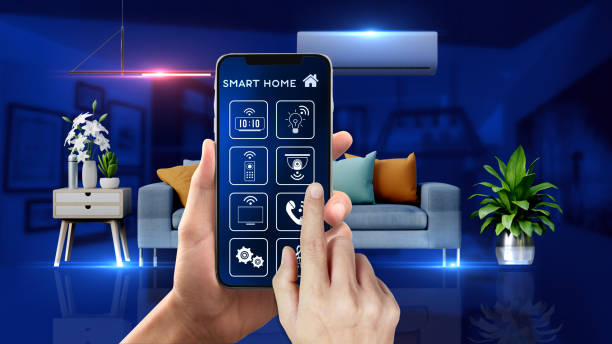IoT Devices: Streamlining Sensor Data Management for Optimal Insights
Introduction
The Internet of Things (IoT) is a transformative technology that has gained rapid adoption across various industries. It involves connecting a wide array of physical devices, sensors, and objects to the internet, allowing them to collect and exchange data. These IoT devices generate an enormous volume of sensor data, which is critical for making informed decisions, improving operational efficiency, and enhancing user experiences. Managing this massive influx of data efficiently is a key challenge. This article delves into the significance of IoT devices in collecting sensor data, the challenges associated with managing large volumes of data, and strategies for addressing these challenges.
The Significance of IoT Devices in Sensor Data Collection
-
Diverse Data Sources: IoT devices come in various forms, from temperature sensors in industrial machinery to smart thermostats in homes. They generate data about their surroundings and activities, enabling us to monitor and control these devices remotely.
-
Real-Time Insights: IoT devices provide real-time data, enabling immediate responses to changing conditions. This is particularly valuable in applications like industrial automation, healthcare monitoring, and smart cities.
-
Improved Decision-Making: The data collected by IoT devices offers valuable insights that can be used to make data-driven decisions. For instance, predictive maintenance in manufacturing can help reduce downtime and costs.
-
Enhanced User Experiences: IoT devices in the consumer space, such as smart home devices and wearable technology, offer convenience and personalization. They collect and process data to create seamless and user-centric experiences.
Challenges in Managing Large Volumes of Sensor Data
While the benefits of IoT devices are substantial, managing the vast amounts of sensor data they generate presents significant challenges:
-
Data Overload: IoT devices can generate terabytes of data daily. This influx can overwhelm data storage and processing capabilities.
-
Data Security and Privacy: With more data being collected, the potential for security breaches and privacy violations increases. Safeguarding sensitive information is crucial.
-
Data Quality: Ensuring the accuracy and reliability of sensor data is challenging. Sensor readings can be affected by factors like environmental conditions and hardware malfunctions.
-
Scalability: As IoT networks expand, it becomes increasingly difficult to scale the infrastructure to accommodate growing data volumes.
-
Data Integration: Combining data from various IoT devices and sources can be complex, as they often use different communication protocols and formats.
-
Real-Time Processing: Many IoT applications require real-time data processing, which demands low-latency systems capable of handling high volumes of data.
-
Data Storage and Retrieval: Efficiently storing and retrieving vast amounts of sensor data, particularly for historical analysis, can be resource-intensive.
Strategies for Efficiently Managing IoT Sensor Data
To address the challenges associated with managing large volumes of sensor data from IoT devices, organizations and individuals can adopt several strategies:
-
Data Compression and Aggregation: Reduce the data volume by compressing and aggregating sensor readings. For instance, instead of sending raw sensor data, aggregate it into meaningful statistics or alerts.
-
Edge Computing: Process data at the edge (i.e., on the IoT device itself) to filter and send only relevant information to the cloud or data center, reducing the amount of data transmitted.
-
Cloud-Based Solutions: Leverage cloud-based platforms and services to handle data storage, processing, and analysis. Cloud providers offer scalable, cost-effective solutions for managing large volumes of data.
-
Data Quality Assurance: Implement data quality checks and validation mechanisms to ensure the accuracy and reliability of sensor data. Data cleansing and anomaly detection algorithms can be useful.
-
Data Retention Policies: Define clear data retention policies to manage historical data efficiently. Archive older data that is no longer required for real-time analysis.
-
Security Measures: Secure data with encryption, access controls, and monitoring. Implement security best practices to protect IoT devices and networks from cyber threats.
-
Standardization: Promote data standardization and the use of common communication protocols to simplify data integration across various devices and systems.
-
Machine Learning and AI: Utilize machine learning and artificial intelligence algorithms to analyze sensor data for insights, anomalies, and predictive maintenance.
-
Real-Time Data Processing: Employ stream processing frameworks like Apache Kafka, Apache Flink, or AWS Kinesis for real-time data processing and analytics.
-
Scalability Planning: Continuously assess and plan for the scalability requirements of IoT deployments. Ensure the infrastructure can accommodate growing data volumes.
-
Data Visualization: Use data visualization tools and dashboards to make sense of the data and present insights in a comprehensible manner.
Conclusion
The Internet of Things has revolutionized the way we collect and utilize sensor data. IoT devices have become integral in a wide range of applications, from industrial automation to smart homes. However, managing the immense volume of sensor data they generate can be challenging. Efficiently handling this data requires a combination of strategies, including data compression, edge computing, cloud-based solutions, data quality assurance, and robust security measures.
As IoT continues to expand, the ability to manage large volumes of sensor data effectively will become even more critical. Organizations and individuals who can overcome these challenges will be well-positioned to unlock the full potential of IoT and harness the power of data for better decision-making and improved user experiences.

